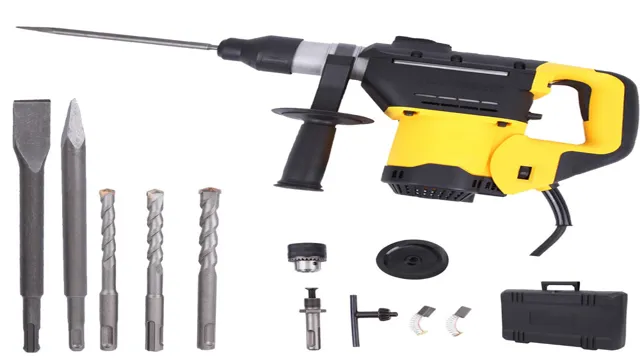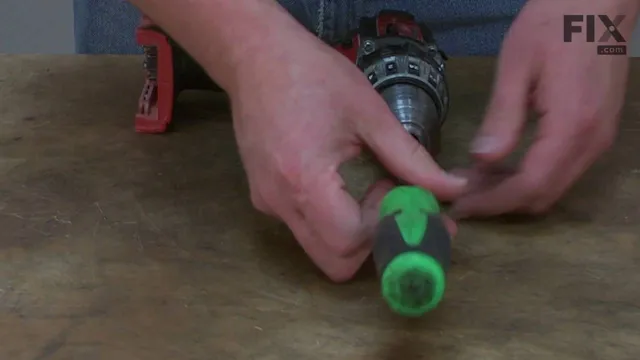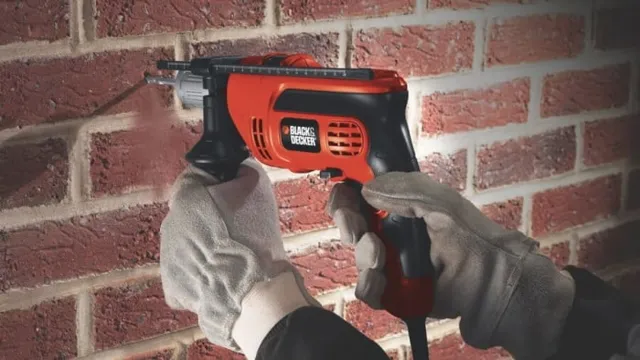Can You Use Hammer Drill as Normal Drill? Pros, Cons, and Safety Measures.
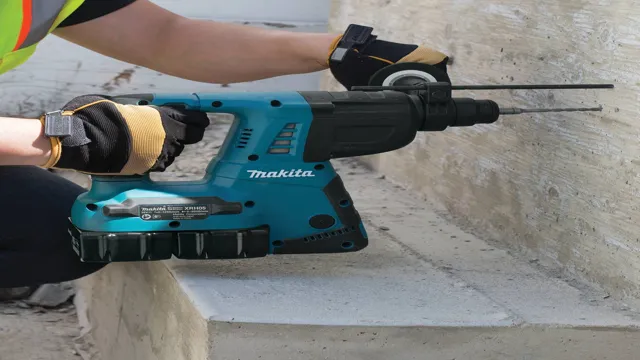
Are you looking for a versatile tool that can handle a variety of tasks? Look no further than a hammer drill! Though typically used for masonry work, these powerful drills can also be used as normal drills for wood, metal, and other materials. With their ability to rotate and hammer simultaneously, hammer drills are great for making holes in tough surfaces, but can also be adjusted to function like a regular drill by turning off the hammer mode. This makes them an excellent choice for DIY enthusiasts or professionals who need a tool that can handle both heavy-duty and lighter tasks.
So, if you’re wondering whether a hammer drill can be used as a normal drill, the answer is yes! With a simple adjustment of settings, you can take advantage of this versatile tool and tackle any project with ease. Keep reading for tips on how to make the most of a hammer drill in both modes.
Understanding Hammer Drills
One question that often arises when it comes to hammer drills is whether or not they can be used as normal drills. While it may seem like a simple yes or no answer, the truth is a bit more complex than that. In theory, yes, you can use a hammer drill as a normal drill, but it may not be the best or most efficient tool for the job.
A hammer drill is specifically designed to drill into hard materials like concrete or masonry, using a pounding motion in addition to the rotating motion of a normal drill. This pounding motion can damage softer materials like wood or drywall, and may not be necessary for other jobs. Additionally, hammer drills are often heavier and more powerful than normal drills, which can make them harder to maneuver in tight spaces or for longer periods of time.
So while you could use a hammer drill as a normal drill, it may not be the most practical solution for every job.
What is a Hammer Drill?
A hammer drill is a powerful tool used for drilling through hard surfaces like concrete, brick, and stone. Unlike regular drills that only rotate the drill bit, hammer drills use a pulsating mechanism that drives the bit forward while also providing an impact force that breaks up the hard surface. This force makes it easier to drill through the surface and reduces the strain on the user.
If you are working on a construction project or a DIY home improvement project, a hammer drill is a must-have tool in your toolbox. Its versatility and power can save you time and effort, allowing you to complete your project efficiently. So, whether you are drilling holes for plumbing, electrical wiring, or anchor bolts, a hammer drill is the perfect tool for the job.
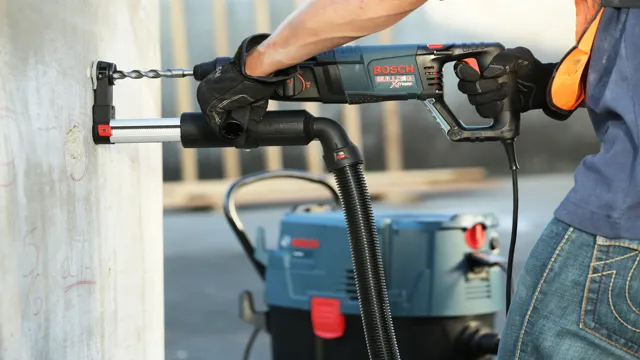
How Does a Hammer Drill Work?
Hammer drill When it comes to drilling through tough surfaces like concrete or masonry, a standard drill just won’t do. That’s where the hammer drill comes in. This powerful tool is designed to create a pulsating effect as it drills, which helps to break apart the tough surface.
A hammer drill achieves this by combining the rotational force of a regular drill with the pounding force of a hammer. The drill bit moves in and out rapidly as it rotates, creating the hammering effect. The result is a tool that can make quick work of tough surfaces, making it a must-have for any DIY or construction project.
With a hammer drill, you can drill through concrete, brick, and other tough materials with ease. Whether you’re a professional contractor or a DIY enthusiast, a hammer drill is an essential tool for any job.
Using a Hammer Drill as a Normal Drill
A hammer drill is a powerful tool designed for heavy-duty drilling or hammering through tough materials like concrete and masonry. However, some people might wonder if they can use a hammer drill as a normal drill for regular drilling tasks. The answer is: yes, you can use a hammer drill as a normal drill by simply turning off the hammering function.
By doing so, it will function like any other regular drill and will allow you to drill through wood, plastic, and metal. However, keep in mind that hammer drills can be heavier and bulkier than regular drills, which may make them less convenient for some tasks. Additionally, when using a hammer drill, it’s essential to use the right type of bit for the material you’re drilling into and to adjust the speed settings accordingly.
Overall, while a hammer drill can be used as a regular drill, it may not be the best option for all jobs.
Yes, But…
Yes, a hammer drill can be used as a normal drill, but there are a few things to keep in mind. Firstly, hammer drills are heavier and bulkier than regular drills, so they may not be the best choice for simple drilling tasks. Additionally, because a hammer drill applies pressure and motion in a different way, they can cause damage to surfaces if not used properly.
However, if you only have a hammer drill on hand, it can certainly be used for basic drilling tasks with the hammer function turned off. It’s important to use the correct drill bit for the material you’re drilling into and to ensure the drill is set on the appropriate speed for the task at hand. With some care and attention, a hammer drill can be a useful tool for both drilling and hammering tasks.
When to Use a Hammer Drill as a Regular Drill
A hammer drill is a formidable tool that is designed primarily for use in drilling through materials like concrete, brick, and stone surfaces. However, it can also be used as a regular drill if the job calls for it. The key advantage in using a hammer drill over a regular drill is that the hammer drill has a more powerful motor that gives it the ability to drill through tough materials more easily.
If you need to drill through a metal or wooden surface, then using a hammer drill is overkill and can potentially damage the material. A regular drill is more accurate and precise for the job, and will prevent any damage to the surface. Additionally, using a regular drill for softer surfaces can help conserve battery life or prolong the life of your hammer drill.
In summary, if you’re working on a project that requires drilling into a tough surface, a hammer drill is your tool of choice, but if you’re working with softer materials, it’s better to use a regular drill.
How to Use a Hammer Drill as a Regular Drill
If you’ve only got access to a hammer drill but need to complete jobs using a regular drill, you’re in luck – you can use a hammer drill as a regular drill! It’s important to note that while a hammer drill is heavier and requires more power, it can achieve the same results as a regular drill. Simply turn off the hammer function by flipping the switch located near the trigger. This will turn off the impact mechanism, allowing you to use the hammer drill as a regular drill.
It’s important to remember that a hammer drill operates at a higher torque than a regular drill, so only use it with appropriate drill bits and safety equipment. With this knowledge, you’ll be able to complete any job that requires a regular drill with a hammer drill, saving you time and effort!
Important Considerations
If you have a hammer drill, you might be wondering if you can use it as a normal drill. The answer is, yes! Hammer drills are designed to drill into materials like concrete and masonry, but they can also be used for drilling tasks that don’t require the hammer action. The key is to make sure the drill is set to the correct mode for your task.
If you don’t need the hammer action, select the drill or driver mode. This will allow you to use the hammer drill as a regular drill, with the added benefit of its power and speed. However, keep in mind that hammer drills are usually heavier than regular drills, and can be more difficult to use for tasks that require more precision.
Additionally, the hammer action of a hammer drill can cause damage to materials like wood or metal, so be sure to avoid using the hammer action on these materials. Overall, using a hammer drill as a regular drill is definitely possible, just be sure to choose the right mode for the job.
Drill Bits
When it comes to buying drill bits, there are a few important considerations to keep in mind. Firstly, you need to consider the material you will be drilling into and choose a bit that is best suited to that material. For example, if you are drilling into concrete, you’ll need a masonry bit, whereas if you are drilling into metal, you’ll need a high-speed steel bit.
Additionally, you need to consider the size of the hole you need and choose the appropriate size bit. It is also essential to consider the type of drill you will be using, as some bits are specifically designed to work with certain types of drills. Always choose high-quality drill bits from reputable brands to ensure they will last and perform the job effectively.
Remember that investing in good quality drill bits will save you money in the long run, as you’ll need to replace them less frequently.
Safety Precautions
When it comes to safety precautions, there are a few important considerations that everyone should keep in mind. Whether you’re working with heavy machinery or simply crossing the street, taking a moment to assess potential risks and hazards is essential for preventing accidents and injury. One of the most important things to keep in mind is to always wear the appropriate safety gear.
This could mean a hard hat, safety goggles, or gloves, depending on the situation. Additionally, it’s important to stay alert and aware of your surroundings. This means avoiding distractions like cell phones or headphones and being mindful of potential hazards in your environment.
By taking these simple precautions, you can help keep yourself and others safe from harm. So always remember, safety first!
Conclusion
In conclusion, using a hammer drill as a normal drill is like using a sledgehammer to hang a picture frame; it’s not the most efficient tool for the job. While it may work in a pinch, it’s best to use the proper tool for the task at hand. So, unless you want to end up with some seriously over-drilled holes, leave the hammer drill for heavy-duty projects and opt for a regular drill for your everyday needs.
“
FAQs
What is the main difference between a hammer drill and a normal drill?
The main difference is that a hammer drill has a hammering action that helps to break up hard materials, whereas a normal drill only rotates the drill bit.
Can you use a hammer drill as a normal drill?
Yes, you can use a hammer drill as a normal drill by disabling the hammering action.
What are the advantages of using a hammer drill instead of a normal drill?
The advantages of using a hammer drill are that it can drill into harder materials such as masonry and concrete more easily and quickly.
Can you drill wood with a hammer drill?
Yes, you can drill wood with a hammer drill, but it may be overkill for lighter materials.
What kind of drill bit is best for a hammer drill?
A masonry or concrete drill bit is best for a hammer drill, as it is designed to withstand the hammering action.
Can a beginner use a hammer drill?
Yes, a beginner can use a hammer drill, but it is recommended to start with lighter materials and practice safety precautions.
How do I switch between hammering and drilling modes on a hammer drill?
The exact method can vary depending on the model, but typically there is a switch or button to change between modes. Refer to your owner’s manual for specific instructions.

